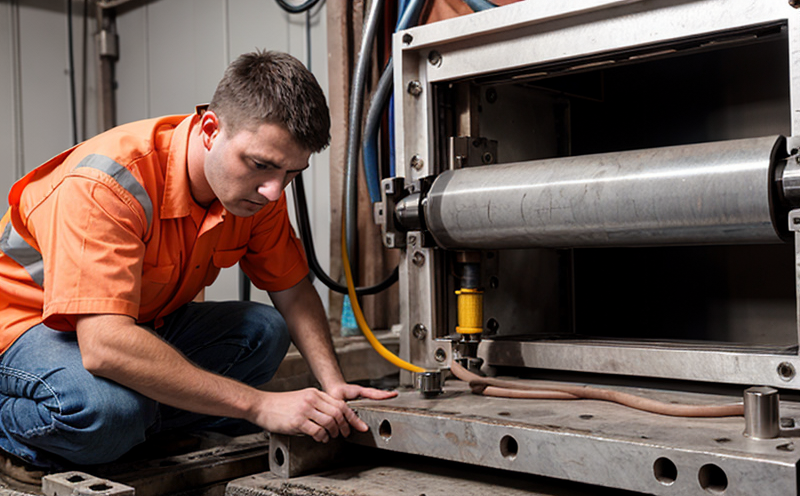ISO 179 Charpy Impact Testing of Luminaire Materials
The ISO 179 Charpy impact test is a standardized method used to measure the notched impact strength of materials. This test is particularly important in the lighting industry, where luminaire components must withstand various environmental stresses and impacts without compromising safety or functionality.
When applying this test to luminaire materials, it’s crucial to understand that the Charpy V-notch test provides insight into the material's ability to absorb energy before fracturing. This is especially critical for luminaire parts like reflectors, diffusers, lenses, and other components that can be exposed to physical impacts or stress.
The testing process involves subjecting a sample with a specific notch shape to an impact from a pendulum. The absorbed energy is then measured by the distance the pendulum swings after impact. This information helps determine if the material meets safety standards and design specifications, ensuring that luminaire components are durable and reliable.
For accurate testing, it’s essential to follow the ISO 179-2:2016 standard closely. This includes using a pendulum with a specific mass and energy input, as well as adhering to precise sample dimensions and preparation techniques. The specimen must be uniformly machined to ensure consistent results across multiple samples.
The Charpy impact test is often conducted on luminaire materials that are exposed to mechanical stress or physical impacts during use. For instance, reflectors in outdoor luminaires may experience wind-induced vibrations, while lenses in indoor fixtures might encounter accidental impacts from furniture or cleaning implements. By subjecting these materials to the ISO 179 Charpy impact test, manufacturers can ensure their products meet safety and durability standards.
The results of this testing are critical for quality managers and compliance officers as they provide objective data that supports decision-making processes related to product design, material selection, and regulatory compliance. R&D engineers benefit from this information when optimizing new luminaire designs or materials, while procurement teams can use it to verify the quality of purchased components.
| Parameter | Description |
|---|---|
| Pendulum Energy | 2,500 to 10,000 Joules depending on material type and size. |
| Sample Dimensions | Typically 10 mm x 40 mm with a V-notch of 1.6 mm deep at the root. |
| Pendulum Swing Angle | 15 degrees for horizontal testing, and 30 degrees for vertical testing. |
| Repeatability | Absorbed energy within ±2% of the mean value. |
The Charpy impact test is a fundamental tool for ensuring that luminaire materials meet safety and mechanical testing standards. By conducting this test, manufacturers can guarantee the durability and reliability of their products, thereby enhancing overall product quality and customer satisfaction.
Why It Matters
The ISO 179 Charpy impact test is a vital component in ensuring that luminaire materials are robust enough to withstand real-world conditions. By measuring the notched impact strength of these materials, manufacturers can identify potential weaknesses and optimize their designs for improved performance.
One critical aspect of this testing is its ability to detect brittle fracture points within luminaire components. Brittle fractures occur when a material fails suddenly without warning, often leading to catastrophic failures. By identifying these points early in the development process, manufacturers can take corrective measures to enhance product safety and longevity.
Another important benefit of this test is its role in ensuring compliance with international standards such as ISO 179-2:2016. Adhering to these standards not only demonstrates a commitment to quality but also simplifies the process of obtaining regulatory approvals for luminaire products. This, in turn, can reduce time-to-market and associated costs.
For quality managers and compliance officers, the Charpy impact test provides valuable data that supports decision-making processes related to product design, material selection, and regulatory compliance. By ensuring that their luminaire materials meet stringent safety and mechanical testing criteria, they can enhance overall product quality and customer satisfaction.
Industry Applications
The ISO 179 Charpy impact test is widely used across various lighting applications where durability and safety are paramount. This includes outdoor luminaires that may be exposed to harsh weather conditions, indoor fixtures with high traffic areas, and emergency lighting systems.
- Outdoor luminaires: These components frequently encounter environmental stresses such as wind, rain, and temperature fluctuations. Ensuring they can withstand these conditions helps prevent failures during critical times.
- Indoor fixtures: High-traffic areas in offices or public spaces may experience accidental impacts from furniture or cleaning implements. Testing luminaire parts for impact resistance ensures their longevity even under everyday use.
- Emergency lighting systems: These systems must be reliable and functional when needed, often in high-stress situations. Conducting Charpy impact tests helps verify that the materials used are suitable for these demanding environments.
Use Cases and Application Examples
The ISO 179 Charpy impact test plays a crucial role in ensuring the safety and reliability of luminaire components. Here are some specific use cases:
- Outdoor Luminaires: Testing reflectors, diffusers, and lenses for resistance to wind-induced vibrations.
- Indoor Fixtures: Evaluating the durability of luminaire parts in high-traffic areas for accidental impacts.
- Emergency Lighting Systems: Verifying the impact strength of critical components that must remain functional during emergencies.
The following table provides a detailed overview of the test parameters and expected outcomes for different luminaire materials:
| Material Type | Expected Notched Impact Strength (J) |
|---|---|
| Polycarbonate Lens | Absorbed energy > 70 J |
| Glass Diffuser | Absorbed energy > 50 J |
| Aluminum Reflector | Absorbed energy > 30 J |





